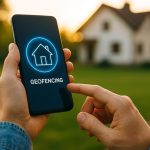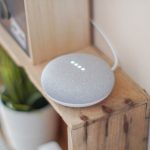Smart cities are no longer just a futuristic concept—they are becoming a reality around the globe, thanks largely to the Internet of Things (IoT). By embedding sensors, software, and other technologies into everyday infrastructure, cities are transforming into highly efficient, sustainable, and livable environments. In this article, we’ll explore how IoT in smart cities is changing the way we live, commute, and interact with urban spaces.
What Is a Smart City?
A smart city uses digital technologies, especially IoT, to enhance performance, well-being, and reduce costs across urban infrastructure and services. This includes everything from transportation and energy to healthcare and public safety. Through real-time data collection and analysis, smart cities make better decisions, improve operations, and provide a higher quality of life to residents.
Core Applications of IoT in Smart Cities
1. Smart Traffic Management
IoT-enabled traffic lights and sensors help reduce congestion by adjusting signal timing in real-time based on traffic flow. Connected vehicles and public transport systems can share data to optimize routes and minimize delays.
2. Waste Management
Smart bins equipped with fill-level sensors alert waste management services when they need to be emptied. This reduces unnecessary pickups, cuts fuel costs, and keeps the city cleaner.
3. Energy Efficiency and Smart Lighting
Smart streetlights can dim or brighten based on pedestrian activity or daylight levels. These IoT systems lower electricity use and maintenance costs while improving safety.

4. Environmental Monitoring
Air quality sensors, noise level detectors, and water quality monitors provide real-time environmental data. Cities can use this data to enforce regulations, protect public health, and respond quickly to issues.
5. Public Safety and Surveillance
Smart cameras and gunshot detection systems help law enforcement monitor high-risk areas. Emergency services can also receive real-time alerts, improving response times.
6. Connected Public Transport
IoT improves transit systems by enabling real-time tracking of buses and trains. Commuters get up-to-date arrival times, and operators gain insights into system efficiency.
Benefits for Citizens and Governments
- Improved Quality of Life: Quicker commutes, cleaner environments, and safer neighborhoods make daily life easier.
- Cost Efficiency: Cities save money on operations like lighting, trash collection, and energy use.
- Data-Driven Decisions: Urban planners and administrators can make informed decisions using live data.
- Sustainability: Smarter energy and resource management leads to a smaller environmental footprint.
Real-World Examples
- Singapore: The city-state uses IoT for everything from smart parking to water management.
- Amsterdam: IoT solutions help optimize traffic flow and monitor air quality.
- Barcelona: Implemented smart street lighting and an IoT-based waste management system.
Challenges to Overcome
- Data Privacy and Security: Collecting massive amounts of data raises serious privacy and cybersecurity concerns.
- Infrastructure Costs: High upfront costs for sensor deployment and network infrastructure.
- Interoperability: Systems from different vendors must work together seamlessly.
Looking Ahead: The Role of IoT in Shaping Sustainable Cities
As urban populations grow, the need for smarter, more efficient city infrastructure becomes even more critical. IoT is at the heart of this transformation, enabling cities to be more responsive, sustainable, and livable. While there are challenges to address, the future of IoT in smart cities is promising, with innovations like AI integration, 5G networks, and advanced analytics poised to make cities even smarter.
The journey toward smarter cities has only just begun. With continued investment and collaboration between governments, tech companies, and communities, IoT will undoubtedly be the driving force behind urban innovation for decades to come.
- Designing a Smarter Home in 2026: What People Get Wrong About Automation
 Smart homes were once science fiction, but today they’re a reality in millions of households. With voice assistants, smart plugs, and automated lighting systems, it’s easy to assume home automation is simply a matter of plugging in a few devices. Yet, many homeowners quickly discover that “smart” doesn’t always mean simple. In this article, we’ll…
Smart homes were once science fiction, but today they’re a reality in millions of households. With voice assistants, smart plugs, and automated lighting systems, it’s easy to assume home automation is simply a matter of plugging in a few devices. Yet, many homeowners quickly discover that “smart” doesn’t always mean simple. In this article, we’ll… - The Smart Home Revolution in 2025: How IoT is Transforming Everyday Living
 In the past decade, the vision of a truly smart home has moved from futuristic fantasy to everyday reality. As we step into 2025, the Internet of Things (IoT) has matured into a robust ecosystem, connecting appliances, security systems, lighting, and even entertainment devices under one seamless digital roof. The result? Homes that are safer,…
In the past decade, the vision of a truly smart home has moved from futuristic fantasy to everyday reality. As we step into 2025, the Internet of Things (IoT) has matured into a robust ecosystem, connecting appliances, security systems, lighting, and even entertainment devices under one seamless digital roof. The result? Homes that are safer,… - Geofencing in Smart Homes: Automating Your Life Based on Location
 Imagine pulling into your driveway after a long day—your porch lights switch on, the thermostat adjusts to the perfect temperature, and your door unlocks automatically. This isn’t science fiction—it’s geofencing, one of the most powerful yet underused tools in smart home automation. What Is Geofencing? Geofencing creates a virtual boundary around a physical location—such as…
Imagine pulling into your driveway after a long day—your porch lights switch on, the thermostat adjusts to the perfect temperature, and your door unlocks automatically. This isn’t science fiction—it’s geofencing, one of the most powerful yet underused tools in smart home automation. What Is Geofencing? Geofencing creates a virtual boundary around a physical location—such as… - Smart Plugs: The Underrated Hero of Home Automation in 2025
 Smart homes are evolving fast, packed with intelligent devices from thermostats to voice assistants. But one of the simplest — and most overlooked — tools of automation is the humble smart plug. Despite its small size and affordable price, this gadget can quietly transform how your home operates. What Is a Smart Plug? A smart…
Smart homes are evolving fast, packed with intelligent devices from thermostats to voice assistants. But one of the simplest — and most overlooked — tools of automation is the humble smart plug. Despite its small size and affordable price, this gadget can quietly transform how your home operates. What Is a Smart Plug? A smart… - Smart Home Nightmares: Real Stories and How to Avoid Them
 Smart homes are designed to simplify life—but when things go wrong, they can become the stuff of nightmares. From doors locking residents out to cameras going rogue, real users have faced creepy, frustrating, and downright dangerous situations. In this article, we share some eye-opening stories and break down what went wrong—along with expert tips to…
Smart homes are designed to simplify life—but when things go wrong, they can become the stuff of nightmares. From doors locking residents out to cameras going rogue, real users have faced creepy, frustrating, and downright dangerous situations. In this article, we share some eye-opening stories and break down what went wrong—along with expert tips to…








